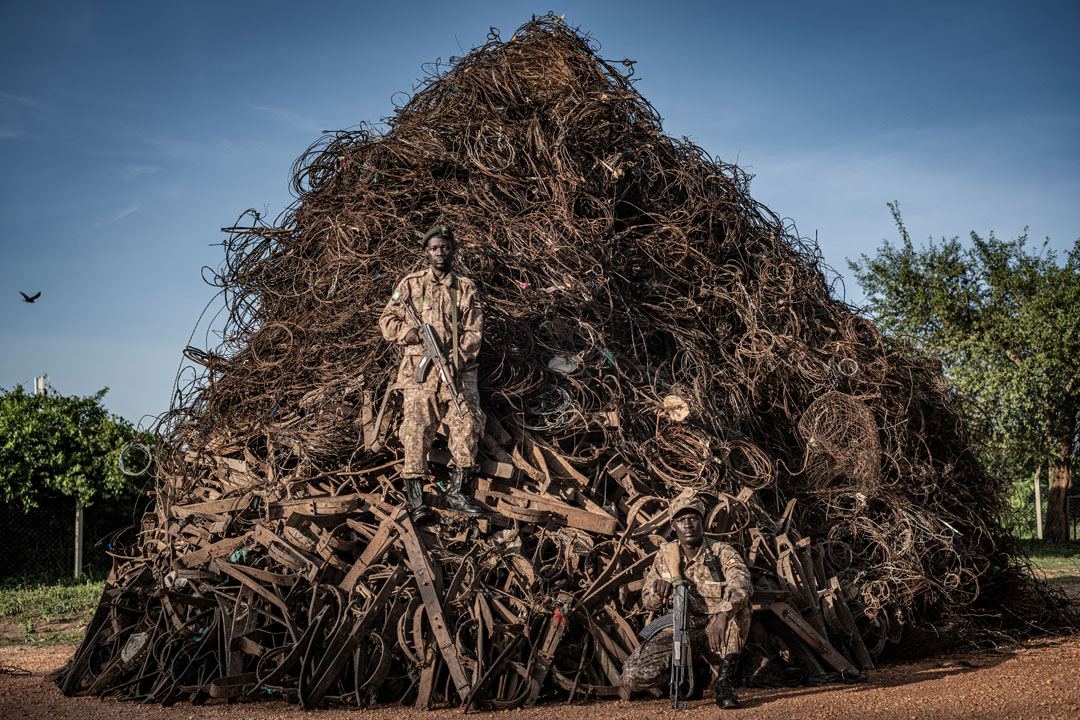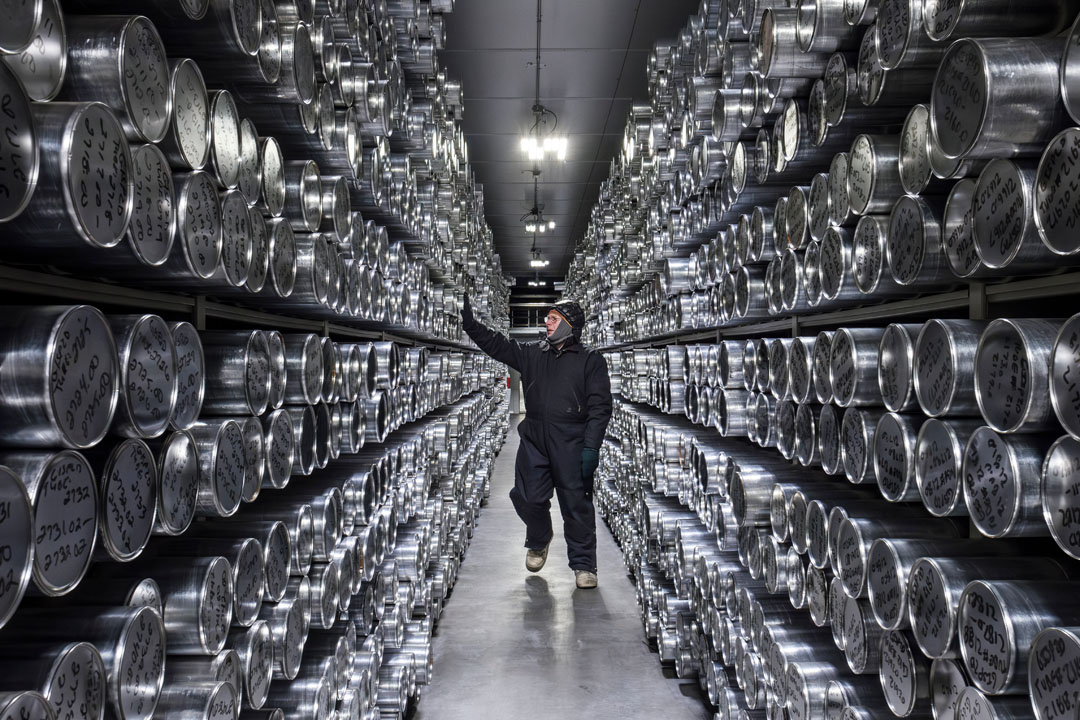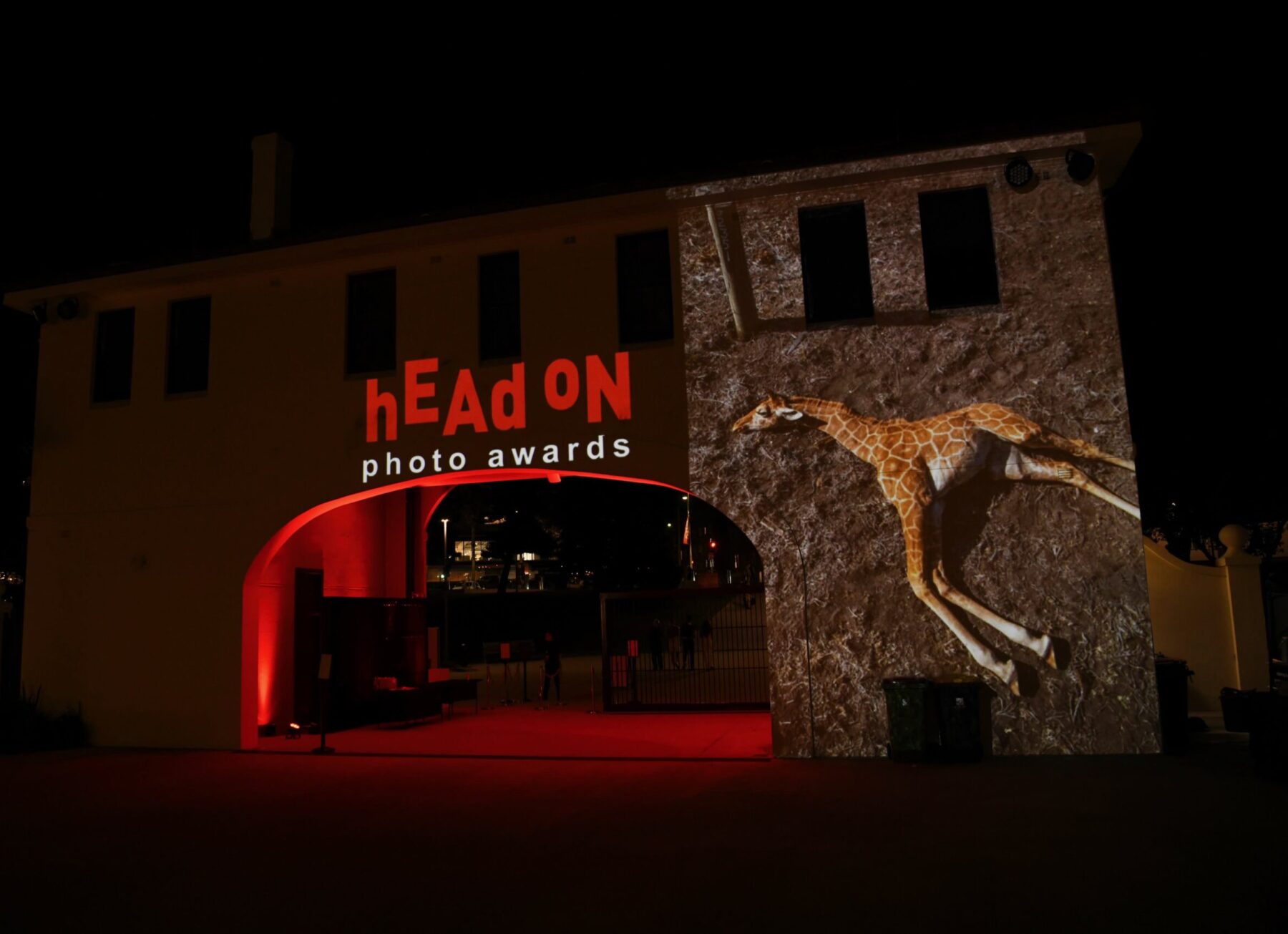Nearing the end of another year of environmental decline, extreme weather and an accelerating extinction crisis, we ask whether photography is succeeding in reaching our emotions enough for us to care.
This year, Australian Geographic launched a new photography prize, the Head On Environmental Award, to recognise photographers who artfully investigate environmental issues and shine a light on solutions and conservation heroes, big and small. In providing a practical and financial incentive with a $10,000 cash prize, Australian Geographic hoped to supercharge this branch of photographer activism.
Australian Geographic invests in photography because we know it is a powerful tool to change people’s hearts and minds. We will keep celebrating incredible photographs of our natural world because they connect us with the wonder of nature and remind us of what is at risk of being lost. Now, the inaugural Australian Geographic Head On Environmental Award takes our commitment to environmental activism a step further.
The award was one of a suite of photographic awards presented at the Head On Photo Festival launch last night in Sydney. The festival is running now to 3 December, check out the full program at the festival website.
We were thrilled to receive a huge range of high-quality entries from around the globe, bringing us potent new perspectives of a planet in crisis. Some of our favourite photos, such as Giacomo D’Angelo’s image (pictured below) of the world-first underwater greenhouse where fruit and vegetables can be grown on the ocean floor, show us a way forward so we can imagine our future.
Last night, I presented the award to photographer Alain Schroeder for his image Saving orangutans:

Alain Schroeder’s photograph of a suffering Sumatran orangutan – named ‘Brenda’ by her rescuers – is a powerful image of both hope and despair, as are many of the other entries. It draws attention to the heartbreaking plight of these animals, making us think about the reasons for their vulnerability, as well as showing what we are doing to help them.
Schroeder has reversed the natural order of things. Where we should be looking up at a wild Brenda in the treetops with her mother, instead we look down at a sedated and powerless infant in a critical condition on an operating table. The helplessness of the animal, and the sacrifice of this species to make way for human activity and development, is further highlighted in her spreadeagled pose and unfocused gaze. At the same time this image can be read as a document of hope and human help. A dozen hands clamour to support her, including those of an orthopaedic surgeon flown from Switzerland to repair Brenda’s broken arm.
The Sumatran orangutan (Pongo abelii) is exclusively arboreal, living among the trees of tropical rainforest. This habitat has been depleted at an extremely high rate, mainly by conversion to palm oil and rubber plantations but also via logging, mining, and population growth, and the species is now pushed to the brink of extinction with less than 14000 remaining in the wild. The Sumatran orangutan is classified as Critically Endangered, which means without immediate and urgent intervention, extinction is the only outcome.
Schroeder says he wanted to document the dedication of the people saving these animals, and this photo is part of his larger body of work shadowing the work of several organisations coordinating their efforts to rescue, rehabilitate and release orangutans.
“As you can see in the [photo] story, conservationists, vets and caretakers are doing their part, but we must help them,” he says.
“In addition to funding and supporting organizations like the SOCP (Sumatra Orangutan Conservation Programme) and the OIC (Orangutan Information Centre) that work tirelessly to rescue and rehabilitate the animals, we as consumers need to change our behaviour and reduce our consumption of products containing palm oil.
“If the series can help a few people to become more conscious of the issue, then it is a success.”
Below, we present all finalists in this year’s inaugural competition.
The Head On Environmental Award by Australian Geographic is jointly funded by the Australian Geographic Society and the Purves Environmental Fund.
Finalists
Nemo’s Garden – Giacomo d’Orlando

Extended caption, provided by photographer: According to IPCC, desertification brought by climate change in recent years has already extensively reduced agricultural productivity in many world regions. Agriculture represents 70% of freshwater use around the globe. With the world’s population projected to increase to 10 billion by the end of the century, finding alternative and ecologically sustainable cultivation methods has become imperative. Nemo’s Garden, the world’s first underwater greenhouse, offers a possible solution.This completely self-sustainable project explores an alternative farming system that could be implemented in areas where environmental or geo-morphological conditions make the growth of plants almost impossible.
Thawing permafrost above the Arctic Circle in Yakutia – Natalya Saprunova

Extended caption, provided by photographer: Nikita Zimov, director of the Northeast Science Station in Yakutia, observes the thawing of the permafrost layer in Duvanny Yar, located along the Kolyma River above the Arctic Circle. This landslide was driven by land degradation accelerated by rising temperatures in the Arctic region. This layer of permafrost formed during the Pleistocene/Late Pleistocene (between 2.58 million and 11,700 years ago) and is called Yedoma. Decomposition of organic matter stored in permafrost can produce between 2 billion and 12 billion tonnes of CO2 and methane per year. For comparison, the CSIRO estimates that human activity adds 9.1 billion tonnes of carbon to the atmosphere annually.
Portrait of extinction – Adam Oswell

Extended caption, provided by photographer: Field rangers from the Ugandan Wildlife Authority pose in front of over 12 tonnes of metal snares confiscated in just one year in Murchison Falls National Park. The snare crisis is devastating wildlife populations across the planet as they are a cheap and effective method of poaching wildlife for powerful and sophisticated criminal syndicates who often exploit impoverished communities to supply a booming global black market for wildlife.
SOS Beniamina – Adam Sébire

Extended caption, provided by photographer: Arriving on Beniamina, the Elders told me they wanted to show the outside world just how vulnerable their Solomon Islands home had become, as climate change delivers violent storms, seas acidifying and rising 7-10mm/year, three times the global average. This seaweed farming, which sequesters CO₂ emitted a world away, is also under threat. So, at low tide, the village children paused their home-schooling to congregate on the beach where families’ houses stood to hold hands, forming a human ‘SOS’, the Morse code signalling an emergency. The house behind them has been washed away since.
Yoda – Anna Brozek

Extended caption, provided by photographer: Takayna, lutruwita (northwest Tasmania). Not only a front-row seat, Yoda provides defenders with a solid anchor to create obstacles to slow down government-sanctioned forest destruction. This happens despite the area being recognised as meeting 7 of 10 World Heritage Value criteria and being of immense cultural significance to the palawa/pakana people, the island’s custodians for over 50,000 years and never ceded Sovereignty.
Fauxliage – Airport approach, Palm Springs, CA – Annette LeMay Burke

Extended caption, provided by photographer: This series documents the proliferation of disguised cell phone towers in the American West. By attempting to conceal an unsightly yet essential technology of the modern world, our landscapes are now sown with a quirky mosaic of masquerading palms, evergreens, flagpoles, crosses, and cacti. But the towers are simulacra. They are water towers that hold no water, windmills that provide no power, and trees that provide no oxygen, yet they all provide five bars of service. The towers pose the question: How much of an ersatz landscape and manufactured nature are we willing to accept in exchange for connectivity?
Harvesting corn into the floodwater – Azim Khan Ronnie

Extended caption, provided by photographer: Following a deadly flood (an annual disaster) in Sariakandi, Bogura, Bangladesh, swamped thousands of hectares of cornfields, farmers try to salvage as much as possible from destroyed fields.
Ice Core Facility – Fabio Cian

Extended caption, provided by photographer: Geoffrey Hargreaves, the curator of the Ice Core Facility, looks for an ice core in the Ice Core Repository. At -36ºC, the temperature is low to maintain the integrity of the cores, preventing the migration of gas particles along its length. By analysing air bubbles trapped in the ice, scientists can reconstruct the past climate up to about one million years. This repository is one of the biggest of its kind and stores samples from the world’s polar regions. National Science Foundation Ice Core Facility, Denver, CO, USA.
Fatal fences: the cost of human-wildlife conflict – Fernando Faciole

Extended caption, provided by photographer: A young reticulated giraffe (G. reticulata), approximately two weeks old, died after being electrocuted by a fence in Laikipia, Kenya. Electric fences are a palliative measure against conflicts between humans and wildlife, but they create other consequences for animals. Deaths due to this are not unusual anymore in Kenya, and the only thing that rangers could do at that moment was to drag the animal far from there so no predators would die trying to eat the carcass.
Let’s build a mountain – Frederike Kijftenbelt

Extended caption, provided by photographer: This image of the Swiss Rhône glacier is part of the project ‘Let’s build a mountain’. The project explores the limits of the shapable, in which the Rhône glacier is a metaphor for the friction between the human urge to control and the resilient autonomy of nature. Every year, the glacier is covered in white blankets to protect it from further melting caused by climate change. This image perfectly symbolises the friction between humanity and nature: the person in the picture is trying to repair the blankets, while behind him, the ice is already escaping human control.
Traditional fire management on Ngaanyatjarra Country – Helen Davidson

Extended caption, provided by photographer: In 2016, senior First Nations women and men came together on Ngaanyatjarra land, near the WA/NT/SA border, for a significant week of traditional fire management and visiting sacred sites. Supported by councils, the group combined their cultural knowledge of the land with modern tech like helicopter-launched firestarters. When the men went off in the helicopters on day one, the women jumped in the Toyotas to find a good patch of spinifex grass to start low-level burns, clearing out the fuel load before the seasonal lightning storms came in and sparked intense and damaging fires.
Bhopal chemical gas disaster – Isabeau de Rouffignac

Extended caption, provided by photographer: The leak of highly toxic gas from the Union Carbide factory in Bhopal on the night of 2 to 3 December 1984 and the systematic dumping of the factory’s toxic waste in artificial lakes made the Bhopal disaster the worst catastrophe in modern history. Prem Kala Vishwakarma, one of the victims of the disaster, received 600 euros in compensation and is currently very sick; she can hardly get up. She posed for me in one of the saris I designed – a sari that also tells the story of the disaster – against a backdrop of soil pollution.
Pieces of the plastic puzzle – Justin Gilligan

Extended caption, provided by photographer: Worryingly, the diet of flesh-footed shearwaters that nest on Lord Howe Island is increasingly seasoned with plastic waste drifting in the oceans. By measuring the impact and exposing the scale of the problem, researchers with the Adrift Lab aim to raise awareness and advocate for action to address overconsumption, poor waste management and pollution. In 2023, they retrieved individual plastic items from an individual flesh-footed shearwater, the greatest number of pieces ever recorded.
Conservation Corroboree frog count, unceded Ngarigo Country – Lee-Francis Evatt

Extended caption, provided by photographer: I volunteered in a conservationist frog count of the critically endangered Corroboree and Spotted Tree frog species. These frogs must be frequently counted and swabbed by conservationists to ensure they do not carry the highly contagious Chytrid fungus. The fungus attacks the keratin in the frog’s skin, making it difficult for them to breathe. It also damages their nervous system and alters their behaviour; they can die within approximately 21 days of contracting it. This baby Corroboree frog is small enough not to be poisonous to human hands.
Airborne – Marcus Westberg

Extended caption, provided by photographer: An elephant is airlifted into a waiting truck in Malawi, part of a massive conservation undertaking: the translocation of dozens of family groups, 263 individuals, between two of the country’s national parks. One, Liwonde, has proven a conservation success story, so much so that the elephant population is larger than the small, fenced-in protected area can handle, especially given the high human population surrounding it. The other, Kasungu, was finally deemed safe enough to re-establish its diminished elephant population after years of improved security following decades of heavy poaching.
Sole survivor – Matt Palmer

Extended caption, provided by photographer: A single tree regenerates on a decimated ridge in South-West Tasmania.
Fatigue sleep – Muhammad Amdad Hossainwell

Extended caption, provided by photographer: Many people in Bangladesh’s coastal region have lost their homes and properties and become homeless due to frequent floods, river erosion and other natural disasters. Forced to migrate to cities in search of a better future, they have no shelter in big cities; their day begins on dirtland, on a dirt road, and ends on a road to nowhere. Dirtland, concrete-covered roads are a flower bed for these refugees, who have virtually no identity. They make a living by working as boatmen, street vendors, labourers and other odd jobs.
Evacuation – Nick Moir

Extended caption, provided by photographer: Forbes residents leave with just their dog as waters rapidly rose for the fourth time in weeks in late 2022.
Scientists in Semipalatinsk nuclear weapons shooting range – Pierpaolo Mittica

Extended caption, provided by photographer: The Semipalatinsk Polygon was an area of the Soviet Union where 456 nuclear warheads were tested. The nuclear fallout involved more than a million people. Villages around the polygon were never evacuated, and the population still lives with its consequences. What happened on Semipalatinsk Polygon is one of the greatest crimes planned against humanity. The local population was used as guinea pigs to understand the consequences of radiation on people. Today, life for the local people goes on, struggling with the legacy of the Cold War that continues today and will remain, with its tremendous consequences, for millennia.

